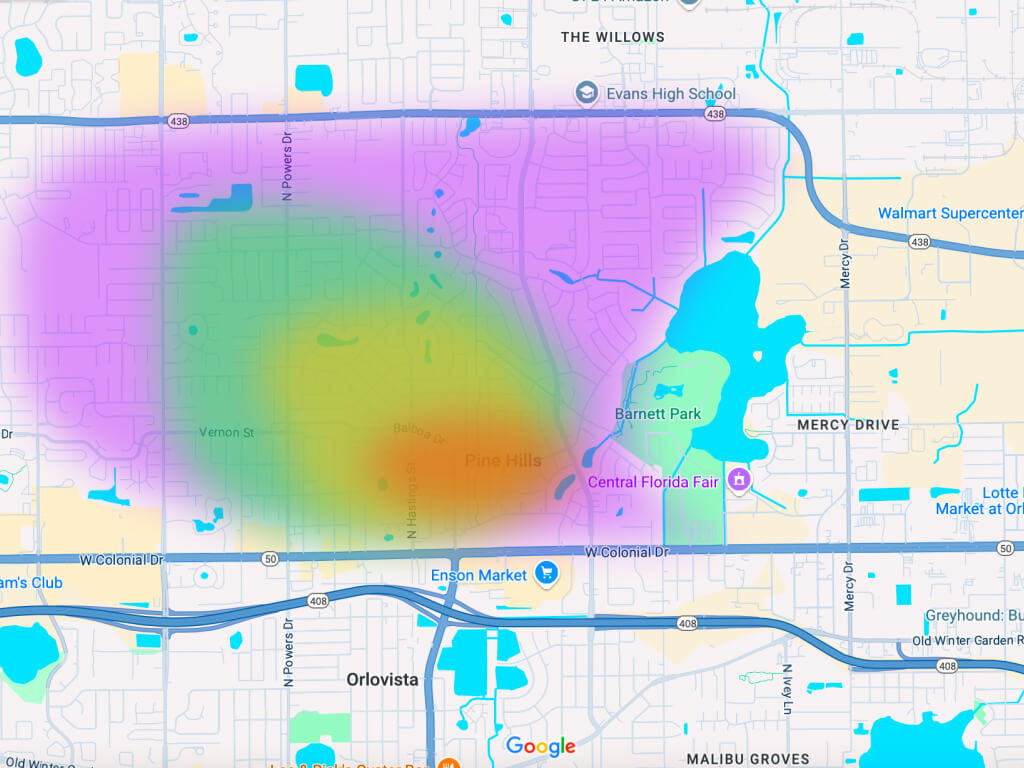
Local SEO isn’t about “ranking higher” — it’s about dominating your backyard. Miss these 5 features, and you’re handing customers to the business next door.
No long & boring entry speeches. SEO stands search engine optimisation, local seo — for optimising for better ranking (position in Google) in a specific area.
Let’s cut right to the chase, as our homepage promises:
1. Google Business Profile is Your Digital Storefront
Your Google Business Profile (aka GBP) is a free tool that lets you manage how your business appears on Google Search and Maps. It includes your name, address, phone number, hours, photos, and posts. A complete GBP helps customers find you locally and builds trust with Google.
Why it matters
76% of people who search “near me” visit a business within 24 hours. If your GBP is half-assed, you’re invisible.
Must-haves
- Posts updated weekly: A bakery posting “Fresh sourdough every Thursday” gets 3x more clicks than static profiles.
- Real photos, not stock shots: A gym using member-generated content saw 40% more profile visits.
- Q&A section pre-filled: “Do you offer vegan options?” → Answer publicly, or let competitors snipe your clients.
Use the “Products” tab to showcase your top seller with prices. A plumber listing “24hr leak fix – $199” booked 15 jobs in a week.
2. Local Citations
In simple terms, local citations are mentions of your business name, address, and phone number (NAP) on other websites like Yelp, Yellow Pages, or industry directories.
Consistent citations across the web signal to Google that your business is legitimate and location-specific.
Why it matters
Google cross-checks your name, address, and phone number (NAP) on 50+ sites like Yelp, Yellow Pages, and industry directories. Inconsistencies = distrust.
Must-haves:
- NAP identical everywhere: A single typo (“St.” vs “Street”) can tank rankings.
- Industry-specific directories: A divorce lawyer listed on Avvo and Lawyers.com gets 25% more referral traffic.
Hijack competitors’ citations. A coffee shop updated outdated Yelp pages of closed rivals, redirecting 30% of their traffic.
3. On-Page SEO That Screams “Local”
On-page SEO involves optimizing your website’s content and code for local search intent. You can optimise for nation-wide scale, global, or local — with a varying scope.
Local SEO is not much different from general SEO. It includes using location-based keywords in titles, headers, and meta tags. You can go as far as schema markup setup to help Google understand your services, or keep it simple. There’s a rumor Google doesn’t like SEO, so more optimisation is not always better.
Why it matters
“Best coffee shop” ranks globally. “Best coffee shop in Boise” lands locals.
Must-haves:
- City + neighborhood in titles: “Boise Tax Services | Downtown Accountants” beats generic “Tax Help.”
- Local schema markup: A restaurant embedding menus and event dates saw a 20% CTR boost.
Create a “Why Choose Us” page targeting local pain points. A roofer’s page titled “Why Atlanta Roofs Fail (And How We Fix It)” ranked #1 in 3 months.
4. Reviews — and Your Responses
Online reviews on all sorts of platforms — from Google itself, Yelp, or Facebook to forums and niche portals — impact your local rankings and customer trust. Positive reviews improve visibility, while responses to negatives show professionalism.
Why it matters
88% of customers trust reviews as much as personal recommendations.
Must-haves:
- Respond to EVERY review: A hotel manager replying to negatives with “Let’s fix this → Call me direct” reduced 1-star ratings by 60%.
- Embed reviews on your site: A dentist displaying 200+ five-star testimonials cut bounce rates by half.
Ask for reviews via text after service. A car dealership texting “How’d we do?” with a link tripled review volume.
5. Mobile Speed Optimisation
Not just a local feature — but a killer for all local SEO efforts if you skip it. Mobile speed measures how fast your website loads on phones and tablets.
Slow sites frustrate users and hurt rankings, especially for “near me” kind of searches, where quick access is critical.
Why it matters
53% of mobile users abandon sites that take over 3 seconds to load.
Must-haves:
- Compress images below 100KB: A florist shaving 2 seconds off load time increased mobile conversions by 17%.
- Localized CTAs: “Tap to call” buttons outperform “Contact Us” forms by 3x on mobile.
Test your site on a $50 Android burner phone. If it lags, fix it — your customers aren’t using iPhone 15s.
The Bottom Line
As a nice bonus — here’s a list of features that are the opposite of a must. Start with the basics above before you switch to overkill kind of approaches like these:
- Hyper-Local Content Hubs
Creating neighborhood-specific pages (“Plumbers in Lincoln Park vs. Wicker Park”) works only if you have the resources to maintain them. Otherwise, it dilutes your focus. - AI-Generated Localized Content
Tools that auto-generate “10 Best [Your City] [Your Service]” articles often produce thin, duplicate content. Wait until you can invest in human writers (and the human author of this piece has nothing to do with the value of this avice!) - Local Schema Over-Optimization
Markup like LocalBusiness schema is essential, but adding AggregateRating or Event markup for every service can backfire if mismanaged. - Automated Review Solicitation Tools
Blasting review requests via SMS/email risks violating platform policies. Start with manual, personalized asks. - Local PPC Micro-Campaigns
Targeting 10+ zip codes with separate ad sets burns cash. Focus on 1-2 core areas first.
Whatever you opt for — keep in mind that local SEO isn’t about tricks. It’s about clarity, consistency, and speed. And it’s way more effective than all the tricks in the book, combined.
